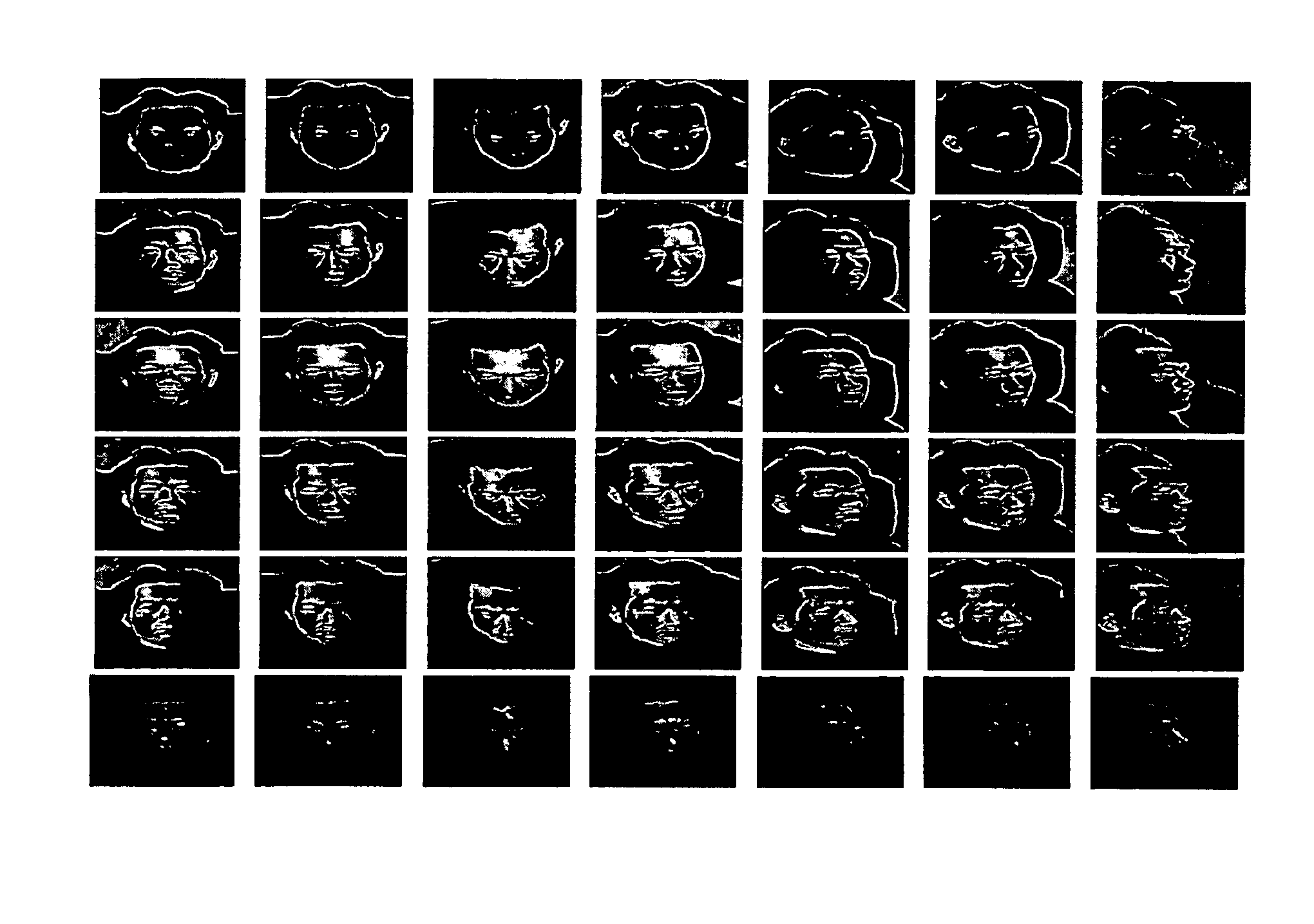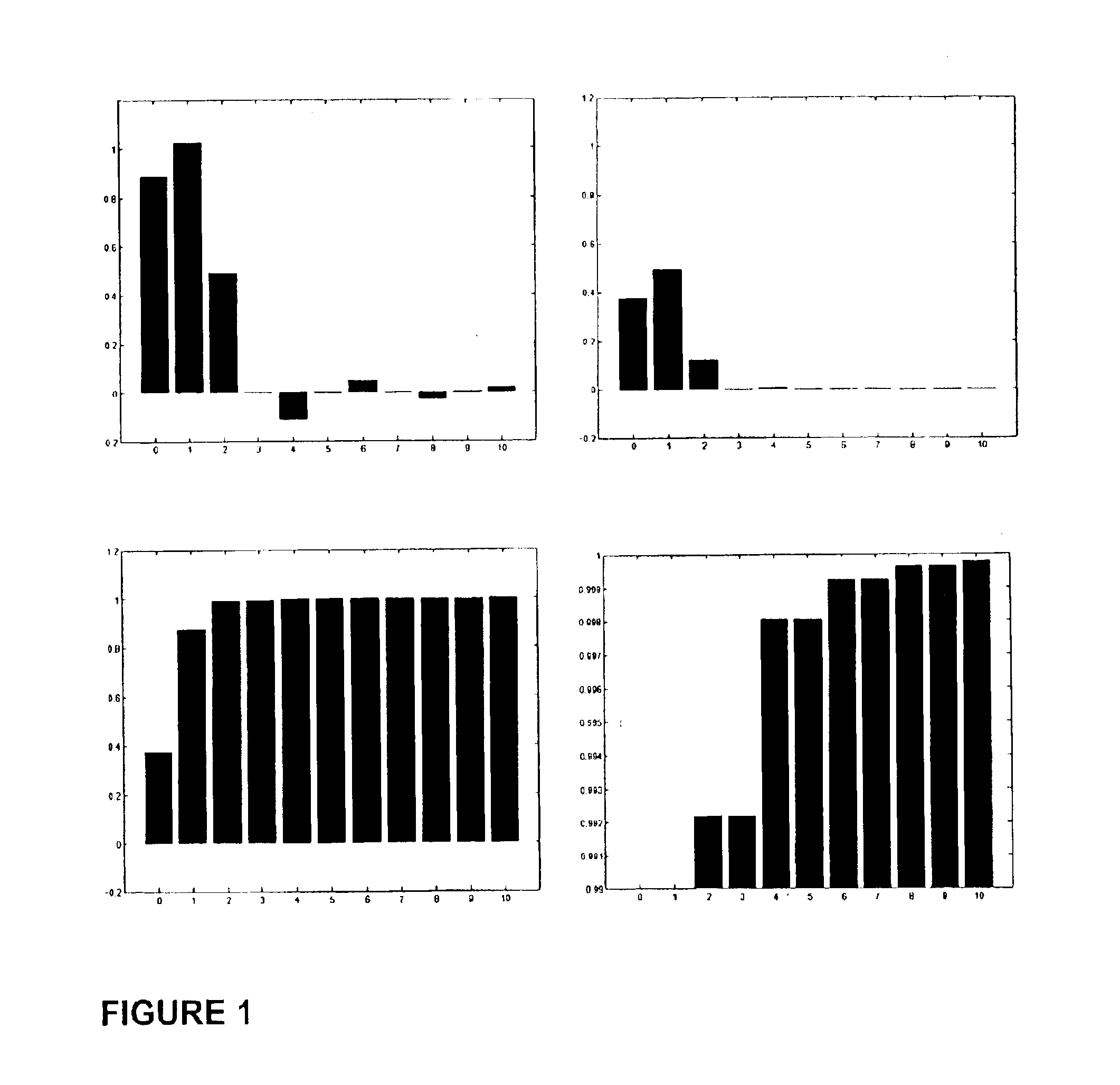Lambertian reflectance and linear subspaces
- Summary
- Abstract
- Description
- Claims
- Application Information
AI Technical Summary
Benefits of technology
Problems solved by technology
Method used
Image
Examples
Embodiment Construction
When light is isotropic and distant from an object, it can be characterized by describing intensity as a function of direction. The set of all possible lighting conditions, then, is equivalent to the set of all functions that are everywhere positive on the surface of a sphere. The approach of the present invention begins by adopting a representation of these functions using surface spherical harmonics. This is analogous to Fourier analysis, but on the surface of the sphere. Spherical harmonics describe functions contained in the unit sphere, surface harmonics are restrictions of these functions to the sphere's surface. To model the way surfaces turn light into an image the present invention looks at reflectance as a function of the surface normal (assuming unit albedo). The present invention shows that reflectance functions are produced through the analog of a convolution of the lighting function with a kernel that represents Lambert's reflection. D'Zmoura used such an analysis to d...
PUM
 Login to View More
Login to View More Abstract
Description
Claims
Application Information
 Login to View More
Login to View More - R&D
- Intellectual Property
- Life Sciences
- Materials
- Tech Scout
- Unparalleled Data Quality
- Higher Quality Content
- 60% Fewer Hallucinations
Browse by: Latest US Patents, China's latest patents, Technical Efficacy Thesaurus, Application Domain, Technology Topic, Popular Technical Reports.
© 2025 PatSnap. All rights reserved.Legal|Privacy policy|Modern Slavery Act Transparency Statement|Sitemap|About US| Contact US: help@patsnap.com



